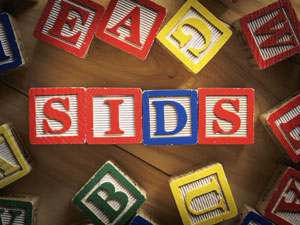Create a safe sleep environment
New parents usually are well educated about the need for babies to sleep on their backs. However, I frequently have parents ask, “What else can I do to reduce the risk of SIDS?”
Keep your sleeping baby safe
- Place your baby to sleep on her back for every sleep. If your baby is able to roll over, still place her on her back to sleep for every sleep but if she rolls to her side or stomach, you can leave her in that position.
- Place your baby to sleep on a firm, flat sleep surface. Do not use a crib that has drop-side rails. Cover the mattress that comes with the product with a fitted sheet. Do not put blankets or pillows between the mattress and the fitted sheet. The crib, bassinet, portable crib or play yard should meet current safety standards. Check to make sure the product has not been recalled. To check this, you can visit the Consumer Product Safety Commission Web site.
- If your baby falls asleep in a car safety seat, stroller, swing, infant carrier or infant sling, move the baby to a firm, flat sleep surface as soon as they are not going to be supervised by an awake adult in the same room.
- Keep soft objects, loose bedding or any objects that could increase the risk of entrapment, suffocation, or strangulation out of the crib. Pillows, quilts, comforters, sheepskins, bumper pads and stuffed toys can cause your baby to suffocate.
- Have your baby sleep in your room but not in your bed. Babies who sleep in the same bed as their parents are at risk of SIDS, suffocation or strangulation. Parents can roll onto babies during sleep or babies can get tangled in the sheets or blankets.
- Breastfeed for as long as you can. Studies show that breastfeeding your baby can help reduce the risk of SIDS.
- It is important to go to your child’s well-child visits, developmental screening and guidance will be done at each appointment. Your baby will receive important immunizations. Recent evidence suggests that immunizations may have a protective effect against SIDS.
- Keep your baby away from cigarette smoke — even outside.
- Overheating is associated with SIDS. Your baby may be too hot if he is sweating or if his chest feels hot. Keep the room where your baby sleeps at a comfortable temperature. At night, use infant sleep clothing designed to keep babies warm such as a sleep sack. Once at home, your baby should not wear a hat or other head covering during sleep.
- Try a pacifier at nap time and bedtime. This helps to reduce the risk of SIDS.
Home cardiorespiratory monitors have not been found to reduce the risk of SIDS. Do not use products such as wedges, positioners, special mattresses and specialized sleep surfaces that claim to reduce the risk of SIDS.
Some infants die during sleep from unsafe sleep environments — entrapment, suffocation and strangulation. Share the SIDS information with anyone who cares for your baby including grandparents, family, friends and child care providers.
